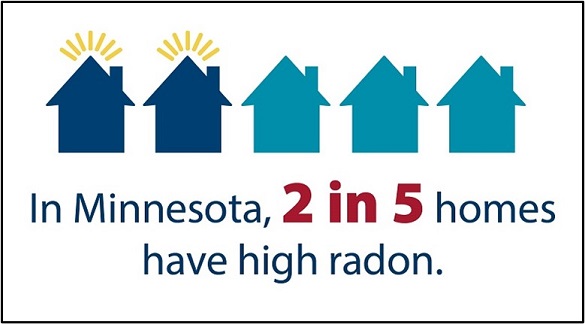Serving the Twin Cities Metro and surrounding area — including Wisconsin
Radon is a naturally occurring radioactive gas that is colorless and odorless. It is produced by the radioactive breakdown of radium, which in turn comes from the radioactive decay of uranium. Since radium and uranium are commonly found in rock and soil, Radon gas is constantly being generated. Outdoors, it is usually not a health hazard. It becomes a problem when it enters a building.
Government officials are now stating that Radon gas is the largest source of radiation affecting the general public.


Radon gas is found in soil, rock, and water under and around a building. Since it is a gas, it can move easily through cracks or openings. Typical areas of entry into a home are:
With the concern for energy conservation, more and more homes have been insulated and caulked to keep the loss of heat in the winter and loss of cold air in the summer down to a minimum. These methods have tended to reduce air circulation and increase the possibility of indoor air pollution.
Well water contaminated with Radon contributes to the problem of Radon pollution in homes. In some areas of the country it is the major source of Radon. Trapped in water, Radon becomes airborne when water is agitated or aerated such as during a shower or while running a washing machine.
When a highly concentrated level of Radon gas is found to be trapped indoors, a health hazard is created. Radon decays into dangerous radioactive solids, called Radon progeny, that can cling to dust particles. When the particles are inhaled and become lodged in the lungs, they can harm tissues, causing cancer.